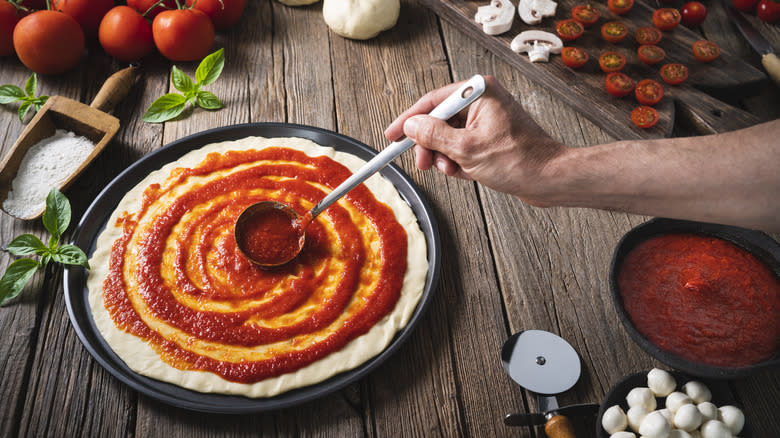The Trick To Get Your Store-Bought Pizza Dough Rising Before You Even Get Home

Making pizza at home is a fun way to get dinner on the table, and it has many perks like not having to wait for the delivery person to ring the doorbell. But, there's one thing you are stuck wasting time on when it comes to using store-bought dough -- waiting for it to rise before you can start assembling your pie with the sauce, cheese, and your go-to toppings. How long you have to wait for the dough to rise varies, but one way to skip the wait, if you plan to use it on the same day, is to leave the package of dough sitting next to your car's window.
In case you're wondering why letting your store-bought dough get some sunshine during your drive speeds up the process, it's because it needs to get warm in order for it to start to rise. Most of the time, ready-to-use dough is in the refrigerator section at the grocery store because the cool temperature helps it last longer. But you don't want to be left waiting longer to make pizza than it would take to order delivery or pop a frozen pie in the oven, so let's get into why you have to let it warm and rise first.
Read more: Mistakes Everyone Makes With Pizza
Prepping Store-Bought Pizza Dough

You should check out the package's instructions for precise timing, but you'll need to let your dough warm for at least 30 minutes before it starts to rise. If you get home faster, set it next to a window in your kitchen to finish the process. After the dough reaches room temperature, the dough might need additional time to rise. It could take up to three hours to double in size, so this certainly isn't a last-minute dinner idea, but it's faster than making the dough from scratch.
Letting the dough rise is just the start of the process, so we have a few more tips for using pre-made dough for your pie. For starters, when it's ready to stretch, use your hands instead of a rolling pin so you don't get rid of any bubbles that help the pizza rise in the oven; flour your surface (and your fingers) so it doesn't stick to anything while you stretch it out into the shape of your pizza; and lastly, par-bake your crust before you add the sauce and toppings to ensure a crispy crust.
Read the original article on Tasting Table.

